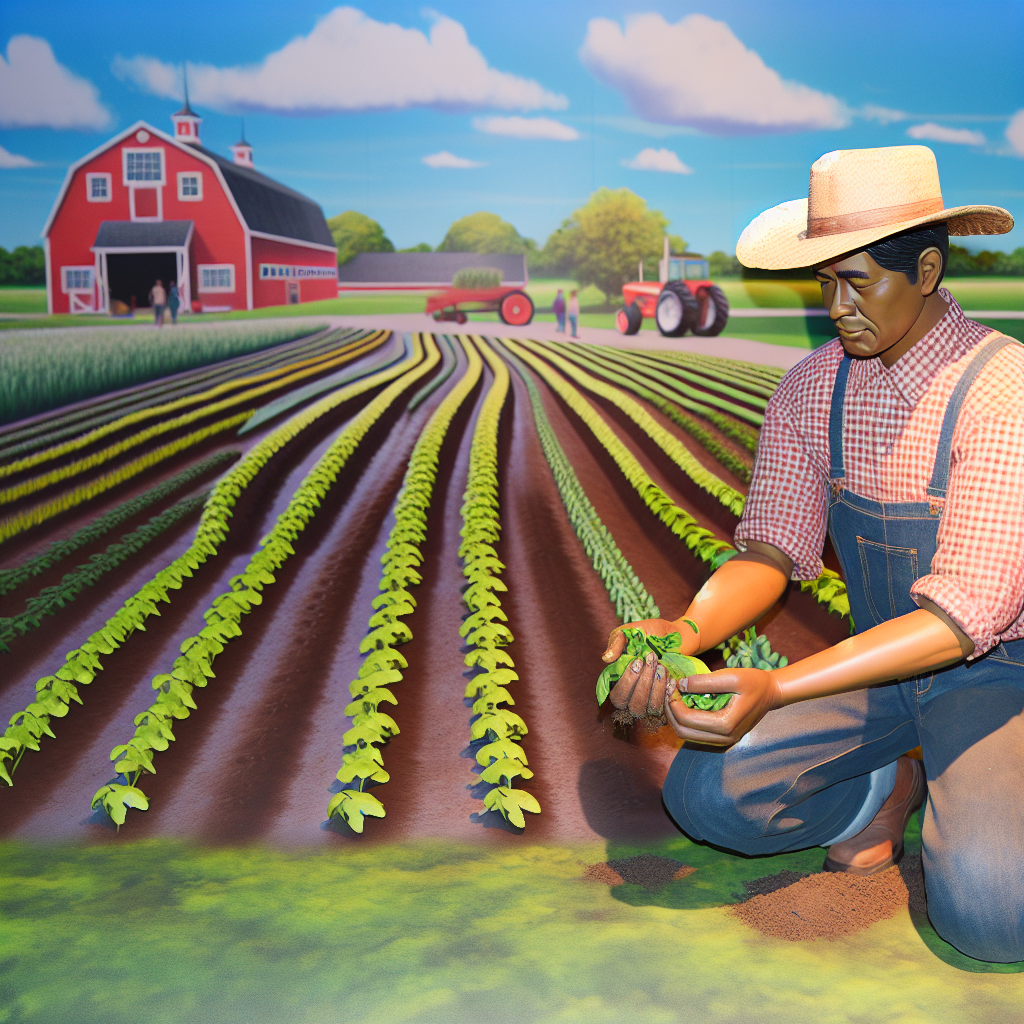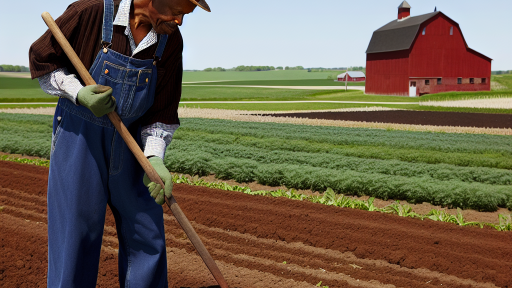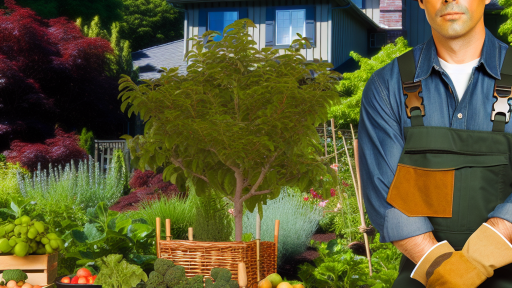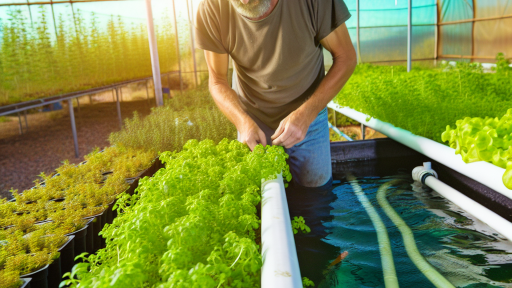Integrating Heirloom Crops into Modern Farming
Introduction to Heirloom Crops
Heirloom crops hold a special place in agriculture.
These are seeds that have been passed down through generations.
Farmers and gardeners preserve them for their unique traits.
They exhibit rich flavors, unique colors, and interesting shapes.
Moreover, heirloom crops often have better adaptability to local conditions.
This adaptability makes them essential for sustainable farming.
Historical Significance of Heirloom Crops
Heirloom crops reflect centuries of agricultural history.
They tell stories of cultural traditions and local biodiversity.
Farmers cultivated these crops for their resilience and superior taste.
As a result, they supported local economies and communities.
Additionally, these crops played a role in food security.
During times of crisis, heirloom varieties often thrived when commercial crops failed.
Modern Relevance of Heirloom Crops
Today, heirloom crops are gaining renewed interest.
Consumers seek out diverse flavors and organic options.
This trend drives demand for heirloom varieties in farmers’ markets.
Transform Your Agribusiness
Unlock your farm's potential with expert advice tailored to your needs. Get actionable steps that drive real results.
Get StartedMoreover, chefs embrace these crops for their unique qualities.
They feature them in dishes to highlight local ingredients.
Consequently, farmers are realizing the economic benefits of growing heirlooms.
Integrating Heirloom Crops in Farm Operations
Integrating heirloom crops into modern farming has distinct advantages.
They enhance biodiversity, which can lead to healthier ecosystems.
Additionally, these crops can reduce dependency on commercial seeds.
Farmers can save seeds and sustain their harvests over time.
Furthermore, heirloom crops can serve as an effective marketing tool.
They differentiate products in a competitive market.
Challenges in Growing Heirloom Crops
Despite their advantages, growing heirloom crops presents challenges.
They may require more care than hybrid varieties.
Heirloom crops can be more susceptible to pests and diseases.
Farmers need to invest time in proper soil management.
Moreover, market access can be limited, affecting profitability.
Education and support for farmers can help overcome these hurdles.
Benefits of Integrating Heirloom Crops into Modern Farming Practices
Diversity in Crop Production
Heirloom crops enhance diversity in agricultural systems.
This diversity increases resilience against pests and diseases.
Farmers can reduce dependency on chemical pesticides by using resistant heirloom varieties.
Furthermore, diverse plantings can improve soil health and structure.
Preserving Genetic Heritage
Integrating heirloom crops helps preserve genetic diversity in agriculture.
This genetic diversity is vital for adapting to climate change.
Moreover, it promotes the conservation of unique varieties with cultural significance.
Farmers can pass on valuable knowledge and heritage to future generations.
Market Demand and Value Addition
There is a growing market demand for heirloom varieties among consumers.
Showcase Your Farming Business
Publish your professional farming services profile on our blog for a one-time fee of $200 and reach a dedicated audience of farmers and agribusiness owners.
Publish Your ProfileHeirloom crops often fetch higher prices due to their unique flavors and heritage.
This market trend encourages farmers to explore new profitable avenues.
Additionally, niche markets for heirloom products can enhance local economies.
Environmental Benefits
Heirloom crops typically require fewer inputs compared to hybrid crops.
They can thrive in less-than-ideal growing conditions, reducing resource use.
Additionally, heirloom varieties promote biodiversity, supporting overall ecosystem health.
As a result, they contribute to sustainable farming practices.
Enhanced Flavor and Nutrition
Heirloom crops often possess superior taste compared to modern hybrids.
Consumers appreciate the rich flavors of these traditional varieties.
Furthermore, heirloom crops often contain higher levels of nutrients and antioxidants.
This quality improvement aligns with the growing trend towards health-conscious eating.
Challenges of Integrating Heirloom Crops into Contemporary Agricultural Systems
Understanding Heirloom Crops
Heirloom crops have a rich history and unique flavors.
These plants are often open-pollinated and genetically diverse.
As a result, they can adapt to local growing conditions effectively.
However, traditional cultivation methods may differ significantly from modern practices.
Market Demand and Consumer Preferences
Modern consumers often prefer uniform and standardized produce.
This trend poses challenges for heirloom crops with diverse shapes and sizes.
Education is essential to highlight the benefits of heirloom varieties.
Moreover, consumer awareness can influence market demand positively.
Growing Practices and Cultivation
Integrating heirloom crops requires adjustments in agricultural practices.
Farmers may need to learn new cultivation techniques specific to heirlooms.
In addition, heirloom crops often require more attention and care.
This might involve managing soil health and pest control differently.
Pest and Disease Resistance
Many heirloom varieties may lack resistance to pests and diseases.
This can result in higher losses compared to conventional crops.
Consequently, farmers may face increased management challenges.
Developing strategies for pest and disease management is crucial.
Financial Considerations
Transitioning to heirloom crops involves financial investment and risk.
Farmers need to consider seed costs, labor, and market fluctuations.
Access to funding or grants can alleviate some financial burdens.
Additionally, establishing a reliable market can enhance profitability.
Policy and Regulatory Challenges
Current agricultural policies may favor large-scale operations.
This can inadvertently disadvantage small-scale heirloom producers.
Advocating for supportive policies is necessary for market access.
Furthermore, regulations surrounding seed saving and sharing may be restrictive.
Networking and Knowledge Sharing
Collaboration among farmers is vital for sharing knowledge and practices.
Local farming networks can facilitate exchanges of heirloom seeds.
Workshops and seminars can provide education on heirloom cultivation.
Building a community around heirloom crops enhances support and resources.
Technological Integration
Modern farming increasingly relies on technology for efficiency.
Showcase Your Farming Business
Publish your professional farming services profile on our blog for a one-time fee of $200 and reach a dedicated audience of farmers and agribusiness owners.
Publish Your ProfileWhile technology can benefit all crops, it may not suit heirloom varieties.
Farmers should evaluate which technologies align with heirloom cultivation.
Furthermore, integrating traditional knowledge with modern tools can improve outcomes.
Delve into the Subject: Design Ideas for Efficient Hydroponic Systems
Techniques for Selecting Suitable Heirloom Varieties for Specific Climates and Soils
Understanding Local Climate and Soil Conditions
Begin by conducting a thorough assessment of your local climate.
Elements such as temperature, humidity, and rainfall significantly influence crop selection.
Next, analyze the soil type in your area.
Common soil types include sandy, clay, and loamy soils.
Understanding soil composition helps determine which heirloom crops thrive best.
Researching Heirloom Varieties
Explore local seed catalogs and agricultural extensions for heirloom varieties.
Seek information about which crops others successfully grow in similar climates.
Attend farmer’s markets to learn from experienced farmers on variety performance.
Consider browsing online platforms for heirloom seed information and community reviews.
Conducting Small-Scale Trials
Start by planting small plots of different heirloom varieties.
This approach allows for observation of each variety’s growth and resilience.
Document the performance and challenges faced throughout the growing season.
Based on these observations, select the best-performing varieties for larger planting.
Networking with Local Farmers
Engage with local farming communities and associations.
Participate in workshops and conferences focused on heirloom crops.
Sharing knowledge and experiences helps identify successful varieties.
Network through social media groups dedicated to heirloom farming.
Utilizing Biodiversity for Resilience
Choose a mix of heirloom varieties to increase biodiversity in your fields.
Diverse crops help protect against pests and disease outbreaks.
Moreover, they can enhance soil health and resilience to climate variability.
Adapting Growing Techniques
Implement adaptive growing techniques based on your observations.
Experiment with planting dates, spacing, and watering methods for each variety.
Adjustments based on environmental conditions can improve yield and flavor.
Explore Further: Maintaining Water Quality in Aquaponics
Integrating Heirloom Crops with Modern Techniques
Introduction to Case Studies
Heirloom crops offer unique flavors and biodiversity.
Integrating these crops with modern farming enhances sustainability.
This section explores successful case studies of farms doing just that.
Case Study: Green Acres Farm
Green Acres Farm in Oregon showcases the effective integration of heirloom tomatoes.
They use precision irrigation systems to optimize water usage.
This method prevents over-watering and promotes healthy growth.
Additionally, they employ organic pest control methods.
This approach preserves the quality of heirloom varieties.
The farm has increased its tomato yield by 40% since implementation.
Case Study: Heritage Fields
Heritage Fields in California thrives with diverse heirloom crops.
They utilize vertical farming techniques for space efficiency.
This method not only maximizes yields but also minimizes land use.
Showcase Your Farming Business
Publish your professional farming services profile on our blog for a one-time fee of $200 and reach a dedicated audience of farmers and agribusiness owners.
Publish Your ProfileMoreover, they have introduced a mobile app to monitor crop health.
This app provides real-time data on soil moisture and nutrient levels.
As a result, their heirloom vegetable sales increased significantly.
Case Study: Botanica Farms
Botanica Farms in Florida focuses on heirloom peppers and herbs.
The farm uses aquaponics to integrate fish farming with crop growth.
This symbiotic relationship benefits both crops and fish health.
Farmers report that heirloom varieties thrive in the controlled environment.
Furthermore, they contribute to local markets with unique offerings.
Key Takeaways from the Case Studies
- Modern technology can enhance the sustainability of heirloom crops.
- Each farm tailored its approach to suit specific crop needs.
- Real-time data usage improved crop management significantly.
- Community engagement promotes greater interest in heirloom varieties.
Gain More Insights: Heirloom Gardening Techniques for Small Farms

Marketing Strategies for Heirloom Crops in a Competitive Agricultural Market
Understanding Consumer Demand
Consumers increasingly seek unique and flavorful products.
Heirloom crops offer distinct tastes and histories.
Highlight these attributes in marketing efforts.
Connect with local food movements to engage target audiences.
Creating a Unique Brand Identity
A strong brand identity differentiates heirloom crops from mainstream produce.
Focus on storytelling to convey the heritage and uniqueness of crops.
Use visually appealing packaging that reflects organic and local values.
Engage with customers through social media platforms.
Leveraging Local Markets
Local farmers’ markets present excellent selling opportunities.
Participating in these events builds community relationships.
Offer samples to educate consumers about heirloom varieties.
Moreover, consider collaborating with local restaurants for menus featuring heirloom crops.
Utilizing Digital Marketing Strategies
Digital marketing expands reach and engages potential customers effectively.
Create compelling content that showcases heirloom crops’ benefits.
Utilize SEO tactics to improve online visibility.
In addition, consider email marketing to keep consumers informed.
Focusing on Sustainability and Health Benefits
Emphasize the nutritional benefits of heirloom crops.
Many consumers prioritize health, sustainability, and biodiversity.
Share information about sustainable farming practices used in cultivation.
This approach can enhance loyalty among health-conscious consumers.
Building Partnerships and Collaborations
Partner with local agritourism ventures for farm tours and workshops.
Collaborations can raise awareness about heirloom crops.
Identify local chefs who value unique ingredients.
Host farm-to-table events to showcase seasonal heirloom dishes.
Educating the Market
Education plays a crucial role in promoting heirloom crops.
Conduct workshops or webinars to inform consumers about benefits.
Provide resources on cooking and preserving heirloom varieties.
Build a community around shared cooking experiences using these crops.
Find Out More: Innovative Hydroponic Techniques for Farmers
Educational Resources for Farmers Interested in Heirloom Cultivation
Introduction to Heirloom Crops
Heirloom crops offer unique flavors and characteristics.
Understanding their benefits is crucial for modern farming.
Showcase Your Farming Business
Publish your professional farming services profile on our blog for a one-time fee of $200 and reach a dedicated audience of farmers and agribusiness owners.
Publish Your ProfileThese crops promote biodiversity and sustainability in agriculture.
Workshops and Training Programs
Farmers can attend workshops focused on heirloom cultivation.
Organizations like the Seed Savers Exchange offer valuable resources.
Local cooperative extensions often provide training on growing heirloom plants.
Additionally, online platforms host webinars on sustainable practices.
Educational Materials and Guides
Numerous guides detail the specifics of growing heirloom varieties.
- The USDA publishes information on heirloom farming techniques.
- Books by experts like William Woys Weaver offer practical advice.
- Online resources, such as heirloomgardens.org, provide comprehensive tips.
Networking Opportunities
Joining local farming groups can enhance learning about heirloom crops.
These groups facilitate knowledge sharing among farmers.
Conferences dedicated to heirloom varieties also offer networking possibilities.
Funding and Support Programs
Farmers can access grants aimed at promoting heirloom preservation.
Programs through organizations like the Organic Materials Review Institute support sustainability.
Local agricultural departments may also offer funding opportunities for growers.
Best Practices for Cultivation
Adopting best practices is essential for heirloom crop success.
Crop rotation helps maintain soil health and fertility.
Additionally, organic pest management techniques are highly effective.
- Implementing companion planting improves pest resistance.
- Regular soil testing can optimize growth conditions.
- Choosing the right heirloom varieties for the climate ensures better yields.
The Role of Heirloom Crops in Promoting Biodiversity and Sustainability in Farming
Introduction to Heirloom Crops
Heirloom crops are varieties that have been passed down through generations.
These crops are often grown for their unique flavors and resilience.
Farmers cultivate these crops to preserve genetic diversity.
This diversity is crucial for ecosystem stability.
Enhancing Biodiversity
Heirloom crops provide a rich genetic reservoir.
This genetic diversity aids in crop adaptation to changing climates.
Moreover, these varieties support a wider range of wildlife.
They attract beneficial insects and pollinators.
Consequently, this enhances overall farm productivity.
Supporting Soil Health
Heirloom crops contribute positively to soil health.
They can help improve soil structure and fertility.
Planting diverse crops reduces soil erosion risk.
Consequently, it promotes healthier growing conditions.
Farmers observe that diverse crop rotations enhance nutrient cycling.
Increasing Sustainability
Utilizing heirloom crops is an important step toward sustainable farming.
These crops are often more resilient to pests and diseases.
As a result, farmers may rely less on chemical pesticides.
Heirloom varieties also require fewer resources like water.
This efficiency helps to conserve natural resources.
Economic Benefits
Heirloom crops can bring economic advantages to local farmers.
They often command higher prices in niche markets.
Consumers increasingly seek out unique, flavorful produce.
This demand creates new opportunities for small-scale farmers.
Additionally, community-supported agriculture can thrive with heirlooms.
Challenges of Integrating Heirloom Crops
Despite their benefits, integrating heirloom crops comes with challenges.
Showcase Your Farming Business
Publish your professional farming services profile on our blog for a one-time fee of $200 and reach a dedicated audience of farmers and agribusiness owners.
Publish Your ProfileAvailability of seeds can sometimes be limited.
Moreover, heirloom crops may have lower yields than hybrids.
Farmers must also invest in education about these varieties.
Consequently, initial knowledge gaps may need to be addressed.
Benefits of Heirloom Crop Integration
Integrating heirloom crops can enhance biodiversity and sustainability in farming.
By preserving these unique varieties, farmers contribute to a healthier ecosystem.
This approach supports both local economies and food security.
Additional Resources
Fruits and vegetables are less nutritious than they used to be …




